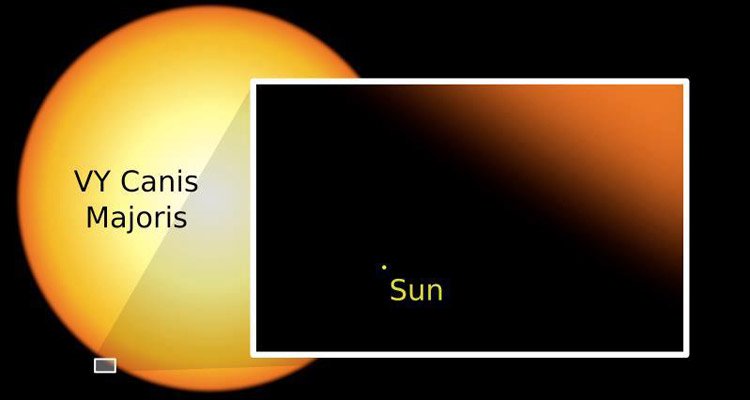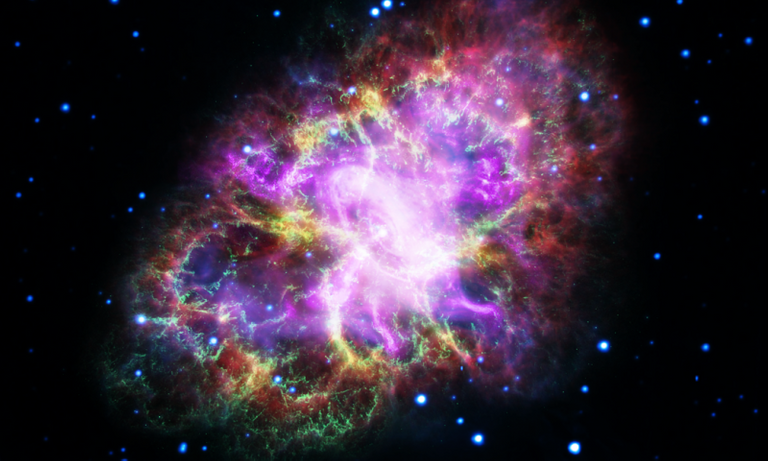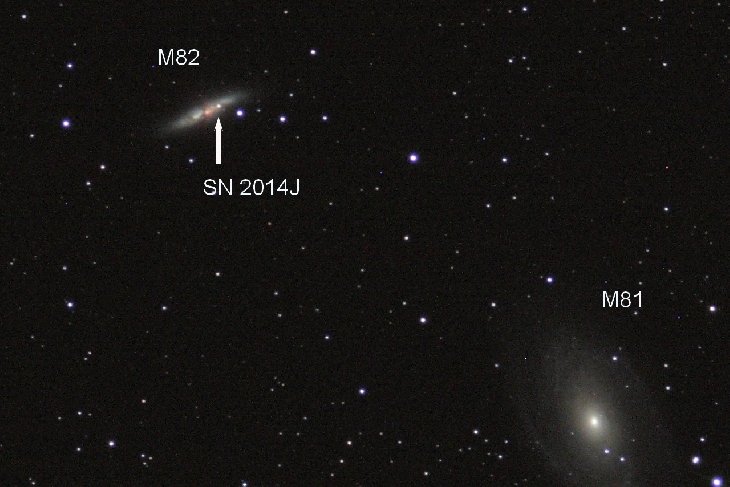
Wow.
The typical star among the trillions is a stable ball of super heated plasma, they steadily burn Hydrogen into Helium for the vast majority of their lives until running out of fusible elements in their core. Stars that which fall into this, 'Low Mass', category of below 8 solar masses comprise the majority of stars, quite a majority actually. It is estimated as many as 99.2 percent of all stars begin their lives with less than 8 solar masses, rendering them incapable of burning anything heavier than Helium, and ultimately resulting in the creation of a white dwarf.
But that 0.8 percent is 0.8 percent of trillions and trillions and trillions, therefore, there are actually quite a few of them.
These high mass stars make for a much more exiting stellar life cycle, building up heavy elements like onion layers in their cores and eventually blowing up, leaving behind some of the weirdest and most intense object in the universe.
But first, the question begs asking; How does this happen in the first place? How do some stars attain so much mass from the beginning, and others not? Well the answer lies in nebula density.
No nebula is "dense" as we would consider it. But compared to other regions of a stellar nursery nebula there is often a central area that which contains more mass in smaller areas. And when they do, it becomes increasingly likely that a high mass star will develop within that region. And presumably, bring an end to the nebula.
That's right, given time the nebula's own stars will become its doom. When a high mass star is created it will begin to blow off stellar winds and radiation with astonishing power. The shocks from these winds pushes the nebula outward, dispersing it. However this takes time. And with time the nebula may be able to make more heavy stars while the star forming zone stays in tact. Often times a stellar nursery could contain up to a dozen high mass stars within it.
These high mass stars are distinguishable from the smaller ones due to the presence of high gravity. Gravity that which is strong enough to create heat and pressures inside the star capable of smashing the cores of heavier elements into each other. Carbon and oxygen into magnesium and sodium, magnesium and sodium into silicon, and silicon into Iron.
Iron is the endgame, once that has been fused in the heart of the star the end approaches. This is because it is not energetically favorable to fuse iron with gravity, as the energy needed to do so is greater than the energy the fusion provides. So rather than continuing to fuse into heavier things. Iron just builds up in the core attaining more and more mass until it reaches a breaking point similar to the point where a white dwarf explodes, 1.4 solar masses.
1.4 suns worth of iron, contained within the core of a star that is bound to explode. This situation just screams instability. And for a good reason.
Within a matter of seconds, the electron degeneracy holding it all apart breaks, the material and some other layers around it fall inward in a quick collapsing fashion. At which point, two different possibilities can unfold. One is that the core stops collapsing at the point in which it is comprised entirely of neutrons. The neutrons are right next to each other, held apart only by one force known as neutron degeneracy. However, if the collapsing core managed to yield any more than 3.4 suns worth of mass, even neutron degeneracy fails to support the mass. And the collapse keeps going into. . . we don't know.
We're not entirely sure how far it continues to collapse after that, there's no way to know, because not to long after the neutron degeneracy fails, the escape velocity, the speed needed to leave the gravitational influence of something, surpasses the speed of light. It becomes a sphere of zero reflection, a black hole.
Interestingly, the type of core remnant created in the collapse also has an effect on the outcome of the remainder of the star's material. Remember, most of the stars mass does not collapse into anything, even if it becomes a black hole. Most of the material is headed elsewhere.

In the case of high mass stars, the loss of this remaining mass is in the form of a supernova. A blast of stellar material into deep space. And they come in different forms.
There are three main types of supernovae; 1a, (1b/ 1c), and 2.
1a is an obscure kind that has to do with white dwarf stars, so I'll leave that one out. The other two types come in the forms of either type 2, or type 1b or 1c.
1b and 1c are very similar, the only difference is that light emitted by them includes different element emission lines. However type 2 supernovae are very distinguishable from the others. They are strong gamma ray emitters, often times called gamma ray burst. I've done an entire article on them before, but in short, they are a form of supernova that happens when black holes form, the tidal forces of the spinning black hole cause the supernova's energy to be focused into a twin laser. The other form of supernovae are more uncontrolled. They fire energy outwards in every direction due to an immensely powerful shock wave of little things called neutrinos packing around 10^44 joules worth of energy, (100,000,000,000,000,000,000,000,000,000,000,000,000,000,000 joules). That incredible amount of energy is used to heat up and propel out the star stuff that was originally collapsing inwards toward the central mass.
The heat reaches unbelievable levels, during the average supernova, the core heats up to nearly a trillion degrees kelvin. Not only that, but the particles of star matter are heated up by the impact of the neutrinos as well, the crab nebula, (a supernova that technically happened around 7500 years ago but to our readings from light that only just reached us happened about 1000 years ago), still remains incredibly hot, around 15,000 degrees kelvin on average. And after just one millennium of expansion, it is already 11 light years across.

(The rapidly spinning powerful Neutron star in the center of the above pictured Crab Nebula is sending off shocks into the nebula creating the ripple effect seen in the heart of the explosion)
Supernovae are incredible in every manner, they can cause a star once contained within a relatively tiny space to cover several light years of space in just a few centuries. They can be heated to incredible temperatures and release untold amounts of energy. However, perhaps the most unbelievable scale they offer is their luminosity. A typical supernova can briefly, (as in for a few weeks), outshine an entire average galaxy. They can be spotted with advanced telescopes from billions of light-years away, a considerable distance even on the scale of the entire observable universe. 8-inch ground telescopes can see ones up to a quarter of a billion light years, giving several thousand galaxies that they can come from. A pair of binoculars can clear up to 50 million light years, and the naked eye can spot a supernova within 10 million light years, still giving a few galaxies including our own that could contain a naked eye supernova.
One such case happened in 2014 in the Cigar Galaxy, located over 11 million light years away it was just barely outside the range of the naked eye but could easily be detected with the assistance of binoculars. Although that supernova was actually a type 1a, they emit basically the same amount of light.

The small arrow points to a point of light glimmering from the Cigar Galaxy that was visible to practically everyone north of Sydney in 2014 fr a couple weeks.
For the not to distant future, it should be mentioned that it is predicted, due to a star collision, naked eye supernova coming from right here in the Milky Way will be visible in 2022, so make sure you mark your calendars.
Image origins:
http://www.daviddarling.info/encyclopedia/V/VY_Canis_Majoris.html
https://www.nasa.gov/image-feature/veil-nebula-supernova-remnant
https://phys.org/news/2017-09-stellar-corpse-cosmic-rays.html
http://spaceweathergallery.com/indiv_upload.php?upload_id=93248
Great article and my calendar is marked!
It'll lie within the constellation Cygnus :)
Just followed now,not sure why I didnt before, but thank goodness you commented back because now I have done and can keep up with you. I think you'll be my guide to the sky here on Steemit. :)
Always glad to hear it!